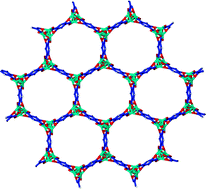 Xenon is naturally present in very small amounts in the atmosphere but radioactive forms are released following nuclear detonations, reprocessing and explosions, such as the recent catastrophe at Fukushima Daiichi Nuclear Power Plant in Japan. Xenon is also used in a variety of other applications, from lighting to medical imaging, so capturing and separating it (from its sister noble gas krypton) is important for both commercial uses and atmospheric monitoring.
Xenon is naturally present in very small amounts in the atmosphere but radioactive forms are released following nuclear detonations, reprocessing and explosions, such as the recent catastrophe at Fukushima Daiichi Nuclear Power Plant in Japan. Xenon is also used in a variety of other applications, from lighting to medical imaging, so capturing and separating it (from its sister noble gas krypton) is important for both commercial uses and atmospheric monitoring.
Praveen Thallapally, at Pacific Northwest National Laboratory, Richland, US, and colleagues made two well-known metal–organic frameworks (MOFs) known as MOF-5 and NiDOBDC and compared their ability to capture and separate xenon with activated carbon. They found that NiDOBDC adsorbs significantly more xenon than MOF-5, and is more selective for xenon over krypton than activated carbon.
To find out more, download Dr Thallapally’s ChemComm communication.











